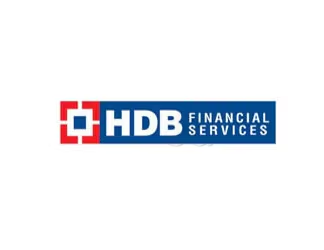On Thursday, August 21, 2025, HDB Financial Services (HDB Financial) edged higher intraday after Motilal Oswal initiated coverage with a Neutral rating and a ₹860 target price—implying about 9% upside from the prior close. The brokerage’s note highlights operating leverage kicking in, scope for margin improvement as rates soften, and a disciplined lending playbook, even as it waits for clearer signs of sustained execution and structurally higher returns.
What moved the stock today
HDB Financial’s share price rose as much as 1.31% to ₹798.6 in morning trade—its highest level since July 23—after Motilal Oswal launched coverage on the newly listed NBFC with a Neutral stance and a ₹860 price objective (≈9% upside). The stock was still up about 1.1% around 10:00 am IST.
Motilal Oswal’s initiation frames HDB as entering a “phase of scalable and profitable growth,” but argues that valuations already discount much of the medium-term narrative, so it wants to see stronger loan growth execution, better navigation through cycles, and a structural (not just cyclical) step-up in return ratios before taking a more constructive view. The note also points to a macro tailwind: with ~77% of the loan book at fixed rates and ~33% of liabilities floating, a rate-cut cycle should nudge NIMs higher.
How the Street is positioning: one day, two messages
The Motilal Oswal call lands just a day after Jefferies began coverage with a Buy and a ₹900 target—~19% implied upside at the time—arguing HDB’s diversified franchise, low funding costs (AAA rating, HDFC Bank parentage), and deep distribution should drive compounding, with ROE potentially improving to ~16% by FY28 from ~13% in FY26.
In short: consensus is coalescing around HDB’s quality and operating leverage, but target prices differ based on how quickly returns normalize and how much of that is already priced in.
The setup since listing
HDB Financial executed India’s largest IPO of 2025 (and the biggest ever by a non-bank lender), raising nearly ₹12,500 crore (about $1.5 billion) via a fresh issue and HDFC Bank’s offer for sale. The anchor book drew marquee names including BlackRock funds, LIC and Norway’s sovereign wealth fund, with shares priced in the ₹700–740 band; trading began on July 2, 2025. On debut, the shares rallied, reflecting the scale and scarcity value of the asset.
The IPO also served a strategic purpose: HDFC Bank’s stake is moving from ~94% pre-IPO towards ~74%, aligning with regulatory expectations on bank-owned NBFCs. That change, and the listing itself, were well-telegraphed through the roadshow and filings.
What Motilal Oswal likes—and what it’s watching
1) Operating leverage & cost discipline: The note suggests that heavy distribution investments are largely behind, positioning HDB for steadier improvements in cost ratios as volumes build. This is a classic maturation phase for scaled NBFCs—branch productivity, digital sourcing, and collections efficiencies together start to show up in opex metrics.
2) Margin tailwinds from rates and mix: With ~77% of the book fixed-rate and roughly a third of liabilities floating, a gentle rate-cut cycle can lift net interest margins as funding costs reset more quickly than asset yields. The brokerage also expects NIM expansion in FY26 as cost of funds trends lower.
3) Franchise depth & underwriting: HDB’s granular product suite across vehicle, MSME and consumer finance, coupled with data-driven underwriting and collections infrastructure, underpins stable asset quality through cycles. The investor conversation has increasingly centered on this balance: growth with guardrails.
What keeps the stance Neutral: Motilal Oswal argues that multiples already reflect much of the medium-term story. It wants evidence of faster loan-growth execution, better cycle management in sensitive pockets, and a structural lift in returns before moving more positive. In other words, the bar to outperform is higher from here.
The numbers behind the narrative
Scale & reach
- AUM: ~₹1.1 trillion.
- Network: ~1,771 branches across India; >80% outside the top 20 cities; ~140,000 dealer touch-points.
- Customer base: ~20 million.
These highlight a broad canvas for cross-sell and resilience across regional cycles.
Recent performance (Q1 FY26)
- PAT: ₹568 crore, down ~2.4% YoY, reflecting a rise in credit costs.
- NII: ₹2,092 crore, up ~18.3% YoY; non-interest income up ~8% YoY to ₹330 crore.
- NIM: 7.7%, up from 7.6% in Q4 FY25.
- Credit cost: ₹670 crore, up ~62% YoY (₹412 crore in Q1 FY25).
The print shows growth momentum in core income, set against a transitory bump in credit cost, especially in select MSME and CV pockets.
Broader outlook from the Street
- Motilal Oswal: PAT CAGR ~26% (FY25–FY28E), AUM CAGR ~19%, with Neutral and ₹860 TP (~9% upside).
- Jefferies: Buy, ₹900 TP (~19% upside then), AUM CAGR ~18–19%, and ROE improvement to ~16% by FY28.
Different starting points, but a shared thesis of improving profitability as growth normalizes, costs scale, and credit costs moderate.
Why the debate on valuation is front and center
HDB sits at a sweet spot—a scaled, diversified retail NBFC with a powerful parent (HDFC Bank), AAA rating, and a distribution network that is costly to replicate. Those features usually command premium multiples. But investors are parsing three moving pieces:
- Return trajectory: Can ROE sustainably move from the low-teens toward the mid-teens by FY28? Jefferies says yes, predicated on NIM gains and operating leverage; Motilal Oswal wants more proof points in hand.
- Credit costs through the cycle: FY25–26 has seen pockets of stress—notably unsecured MSME business loans and CV—amid uneven demand and weather impacts. The Street expects stabilization in H2 and moderation into FY27–28, but the path matters for near-term earnings sensitivity.
- Rate cycle & liability repricing: With a material share of borrowings on floating rates, easing policy should flow through relatively quickly to the funding line, while fixed-rate assets provide yield stability. That convexity supports a NIM drift higher—a key lever for ROE.
Competitive context: what HDB needs to show
India’s retail NBFC arena is crowded with best-in-class incumbents. To preserve premium positioning, HDB will be judged on:
- Granularity of growth: Diversifying growth across vehicle, MSME, and consumer loans while not letting any single pocket dominate the risk mix.
- Digital origination & collections: Moving more sourcing direct (and data-rich), and keeping collection efficiency tight as the book scales. (Motilal Oswal explicitly cites direct sourcing-led origination and data-driven underwriting as positives.)
- Cost curve: Showing opex ratios roll down as the footprint matures—critical for supporting mid-teens ROE without stretching pricing or risk.
Risk check: what could challenge the bull case
- Macroeconomic softness: A slower-than-expected recovery in rural demand or freight cycles could keep MSME BL and CV stress elevated longer, delaying credit cost normalization.
- Rate-cut timing & transmission: If the rate-cut cycle is shallower or slower (or if spreads compress due to competition), the NIM uplift could undershoot expectations.
- Competitive intensity: Aggressive pricing by peers (especially in secured retail and MSME) could press yields, forcing HDB to trade off growth vs. margins.
- Execution across cycles: Motilal Oswal’s watchlist items—loan growth cadence, cycle navigation, and structural ROE—capture execution risk succinctly.
What to watch next
- Repo trajectory & liquidity: Even 25–50 bps of easing with clean transmission into wholesale borrowing lines would help funding costs and NIM. HDB’s fixed-asset / floating-liability mix is levered to this shift.
- H2 demand pulse: Festive-season pick-up, post-monsoon rural recovery, and new product scale-ups (e.g., gold loans) could support AUM growth normalization from H2 onward.
- Asset quality prints: Sequential trends in stage-2/3 buckets, loss given default, and roll-rates in MSME/CV cohorts will be closely scrutinized through FY26.
- Cost curve: Evidence that opex/ATA (or cost-to-assets) inches down as the expanded footprint sweats more, in line with Motilal Oswal’s call.
Investor takeaway
- Today’s pop reflects new-to-coverage interest from a top domestic brokerage and a clear, balanced narrative: HDB has the ingredients—scale, parentage, distribution, risk guardrails—for consistent compounding; the debate is timing and magnitude of margin/return normalization versus what’s already in the price.
- The split stance—Neutral at ₹860 vs. Buy at ₹900—shows that reasonable analysts can land in different places on the same thesis, largely depending on how fast credit costs moderate, how far NIMs expand, and how quickly opex ratios fall.
- For watchers of the franchise, the checklist is crisp: (i) steady AUM growth without over-concentration, (ii) improving NIM/ROE, (iii) credit costs trending down across sensitive pockets, and (iv) opex scaling down as the network matures.
As always, none of this is investment advice. Consider your risk tolerance, time horizon, and consult a SEBI-registered adviser before acting.



